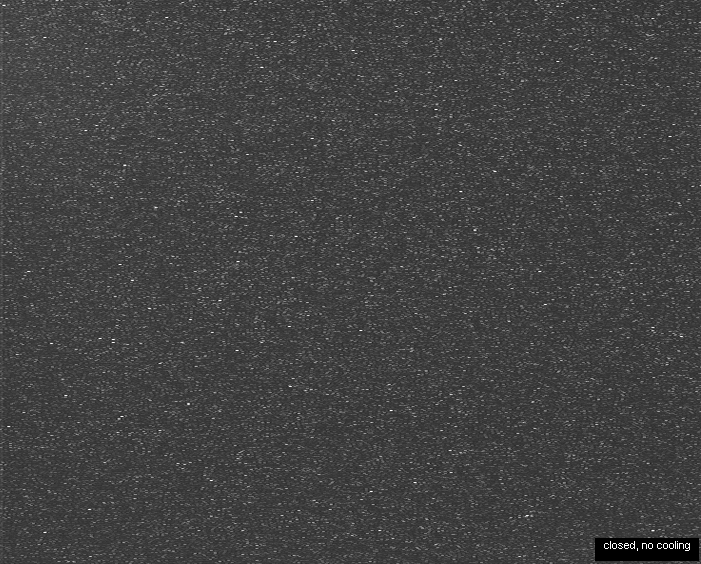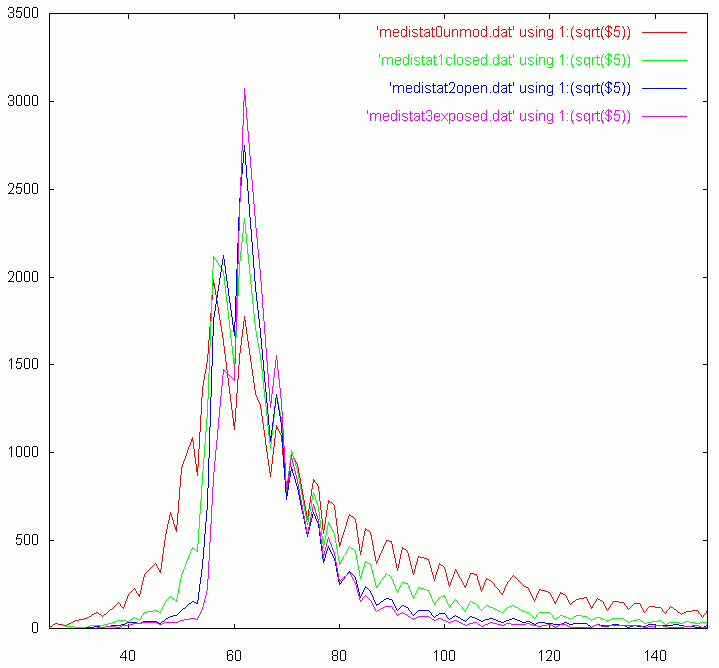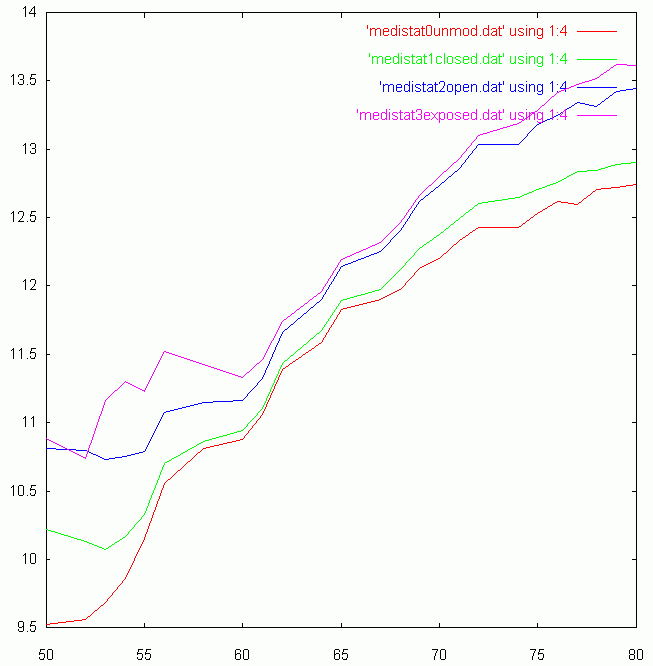Effects of forced-air cooling the Watec WAT-120N camera
www.mondatlas.de: Version 22. January 2004
Martin Elsässer
To demonstrate the varying effectivenes of forced-air cooling with different states of camera-disassembly i did a small testseries. The watec was operated at 20°C ambient temperature, with 10sec exposures, maximum gain and gamma set to hi.
The tests were done with a specially modified version of the camera (serial #51), which had the small foam pad between ccd-chip and circuit board removed. The modified camera was provided by a local supplier.
The following variants were tested:
unmodified camera housing, no cooling
unmodified camera housing, forced airflow from a small fan directed at camera
camera housing half-opened, forced airflow from a small fan directed at electronics. ccd-chip still enclosed in its separate part of housing.
camera housing completely disasembled, forced airflow directed at electronics and exposed ccd-chip
Dark-images compared
The effects of various stages of cooling on the visibility of the "hot-pixels" was quite noticeable:
 |
The animated gif shows four images, which are each the median of a series of 100 dark images. The series were taken with the varying degrees of cooling listed above.
The hot-pixels are noticeably dimmed by the cooling with every additional step of disassembly. As expected, the cooling is most effective, when the air can flow across the ccd-chip itself, but just creating an airflow into the half-opened housing gives a great improvement. |
 |
The histograms of the dark images also show the effect of the varying cooling states: The distribution gets narrower, more concentrated with improved cooling. |
 |
The diagram shows the standard deviation of all pixels, whose median brigtness values are identical. Here, a small increase in the standard deviation is visible with increased cooling. |
I will next try to find a simple way of permanently opening the camera enclosure and creating the required airflow, without creating stray-light issues.
See also Effects of forced airflow cooling at outside-temperatures
Watec-mainpage
Mondatlas-mainpage


